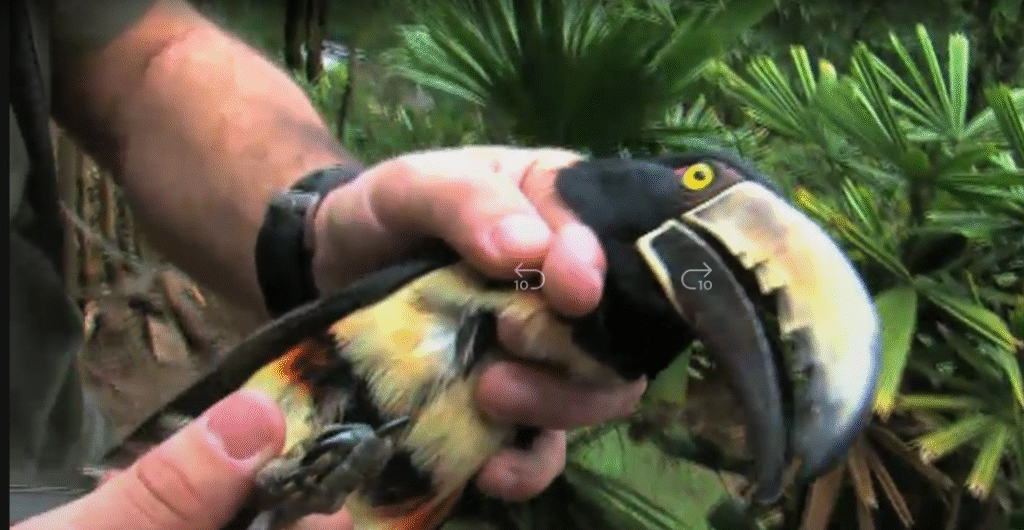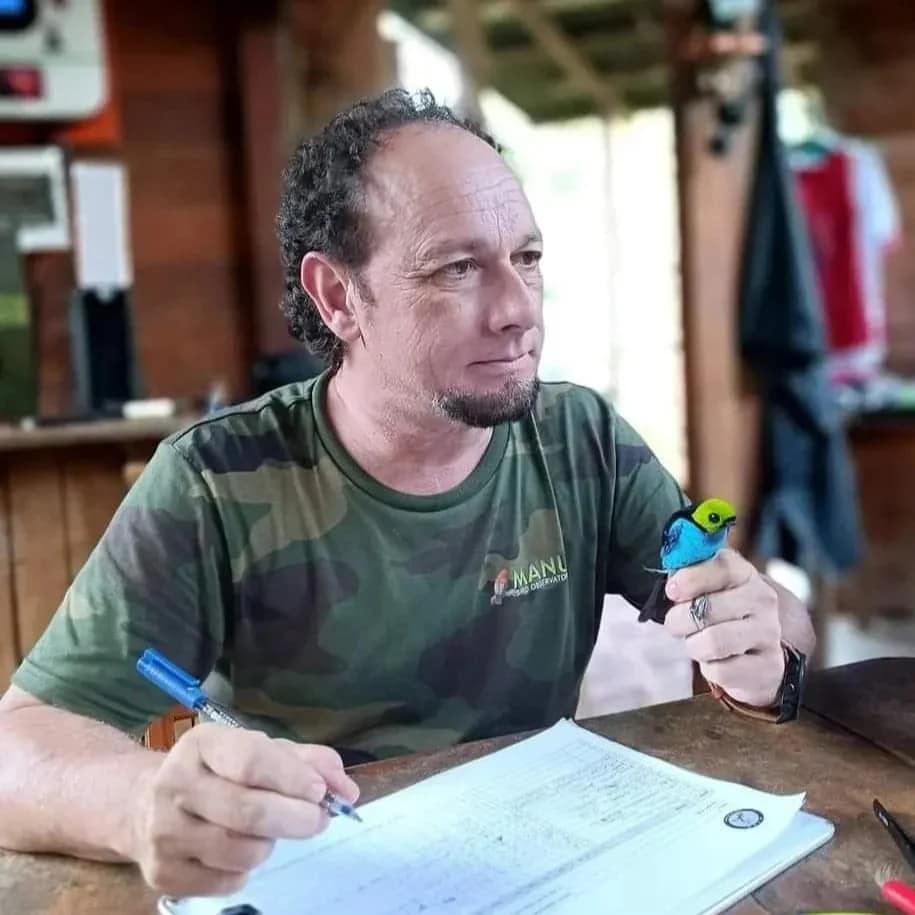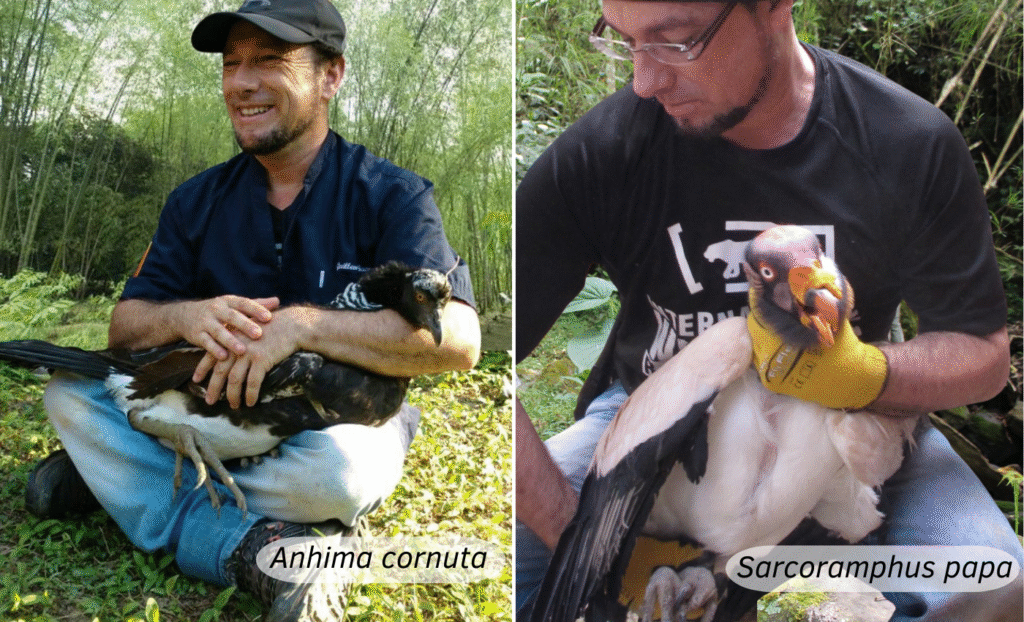More than 40 years of bird ringing: from Europe to the tropics
Guillem Chacon
From Catalonia to the tropics
This photo will be repeated on October 18th of this year. It was taken in 1984 and shows the first group of Catalan ringers. It’s at the Tiana Migration Center in Tiana (Catalonia), the Giró farmhouse. It features a young Guillem Chacon (circled in green), who had already been ringing in Barcelona for 10 years. This year marks the 50th anniversary of ringing in our country [photo by Antoni Abad]
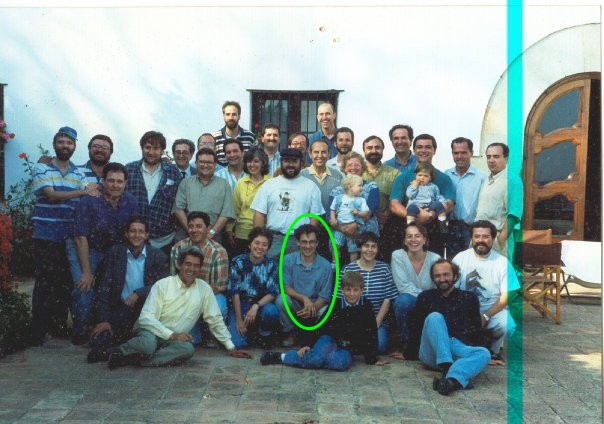

30 years of ringing in Catalonia and Europe
The origins
After years of intensive, nonstop practice in Tiana (Barcelona), I obtained my expert certificate in 1983. With this certificate, I began ringing in the Llobregat Delta, where we created the first ringing station, which operated continuously for more than 10 years. After that, it was time for the Mogent River (Barcelona)
Around 1993, Guillem Chacon showed us on Catalan Television the ringing, habitat restoration and environmental education activities he carried out on the Mogent River with the former Catalan Ornithology Center (Centre Català d’Ornitologia).
Fifteen more years of ringing followed at the confluence of the Ebro, Segre, and Cinca rivers (called Aiguabarreig) in inland Catalonia.
This was the Aiguabarreig Biological Station. During this period, in addition to ringing, she was responsible for coordinating the natural area for the municipalities that comprise it and for directing the Catalan Summer University of Natural Sciences.
During those first 30 years, Guillem Chacon actively participated in ringing projects in Europe, particularly in the Piccole Isole in Italy (where he remains a regular assistant). In the early days (late 1980s), he was a young board member of the Grup Català d’Anellament (Catalan Ornithology Group) (currently the ICO Institut Català d’Ornitologia), and in the late 1990s, when he joined the CMA of Spain as a ringer, he formed part of the CMA Ringers’ Commission (Madrid).
In the period 1999 – 2003 he was part of the board of directors of the Catalan Institute of Natural History (Institució Catalana d’Història Natural) of the Institute of Catalan Studies and later founded and chaired the delegation of the Franja de Ponent in the period 2003 to 2009, promoting the creation of the delegations of this academic institution in the Valencian Country and Alghero.
But the most important thing was yet to come
The Bird Ringer of the tropics
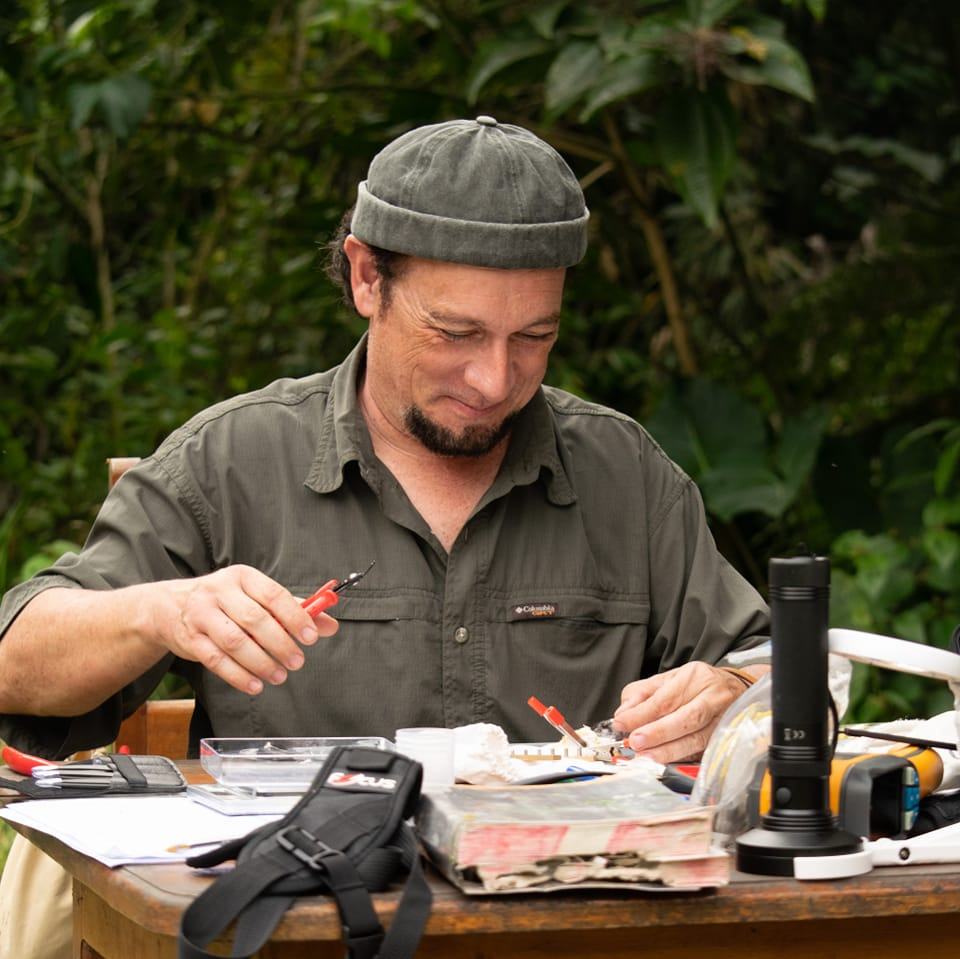
Guillem Chacon rings about 300 days a year. He has ringed more than 1,300 species in over 50 countries. He is frequently invited to inaugurate ornithological stations in Latin America and Africa, and is currently assisting in Asia.
Catalonia TV: 2012 report in Colombia with the University of Valle del Cauca. Guillem Chacon shares some moments from the ringing courses. (Click to see the full report.) Author: Jaume Sañé
From Venezuela, Ecuador and Peru to the entire tropical belt
Twenty-seven years ago, he decided to focus his efforts on the tropics. Much remained to be done, and many countries didn’t have a single permanent bird-ringing project.
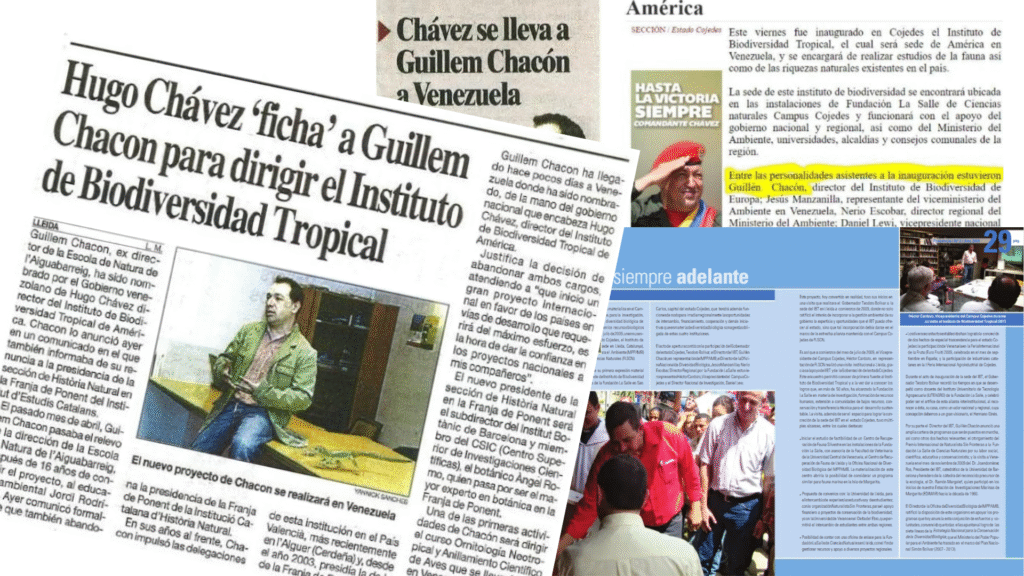
The 2009 press widely reported on Guillem Chacon’s initiative with Venezuela.
Although he had been ringing and training new ringers in the tropics for 12 years, it was in 2009 that Guillem Chacon was hired by the government of President Hugo Chávez to create a biological station in Venezuela and other projects for birds, nature, and ethnic groups. The Catalan press reported amply on the project. Guillem Chacon packed his bags, stopped ringing for EURING, and moved permanently to the tropics. He has lived there ever since.
In 2010, Guillem Chacon, from the Caparo Experimental Station at the University of the Andes, explained to Catalan Television how hummingbird ringing works in the tropics (Click to see the full report). Author: Jaume Sañé
In 2014, the Yasuní Scientific Expedition took place. 200 participants from 26 countries worked on research in the Ecuadorian Amazon under the direction of Guillem Chacon.
And the time came for the great expedition. Guillem Chacon led a grand scientific adventure. 200 researchers and students from 26 countries came to Yasuní to raise awareness about the importance of conserving the Ecuadorian Amazon. The event lasted two months without interruption and was held primarily at the Yasuní Research Station of the Pontifical Catholic University of Ecuador. Chacon was accompanied by a large team of professors from the University of Barcelona and the Autonomous University of Barcelona, from the ICTA (Institute of Environmental Science and Technology), with the full support of the College of Biologists of Catalonia. The undertaking was endorsed by the Ecuadorian Ministry of the Environment and included notable colleagues co-responsible for the scientific work, such as Martí Boada, United Nations Global Prize winner, and Fernando Carceller, naturalist and biotourism expert. During the 60-day expedition, the professionals were accompanied by the director of the National Park, José Eduardo Narváez, and park rangers.
And of course, it was ringed continuously.
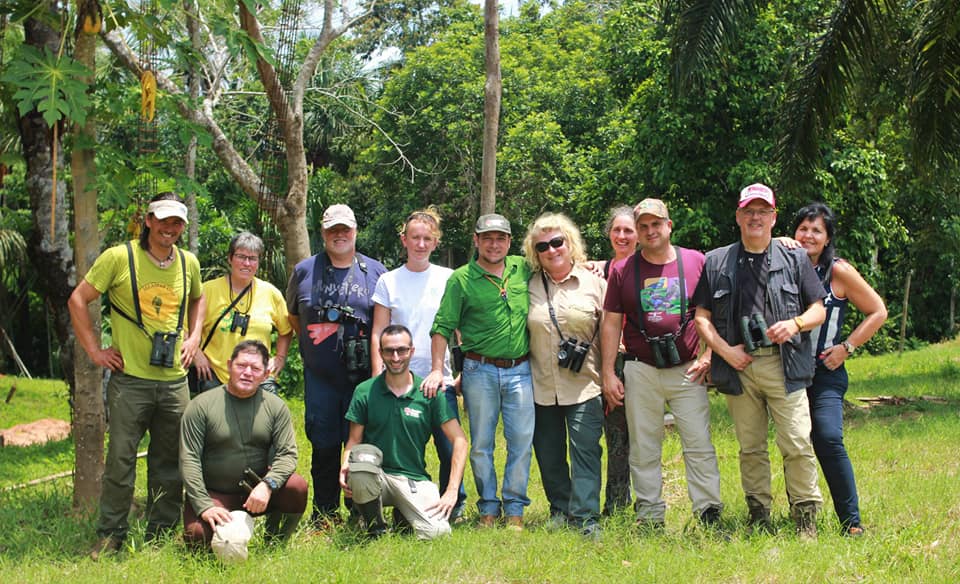
In 2019, thanks to the support of the Peruvian government and within the framework of the Amazon Birding Fest, Guillem Chacon organized the first calibration among bird ringers. Experts and examiners from various countries in Europe, North America, and Latin America participated.
We would like to dedicate this image to Abel Julien (on the right, wearing a vest), who passed away in 2025.

Through his “Bird Ringing Expeditions” initiative, 60 to 90 expert ringers from around the world, from China to Quebec, accompany Guillem Chacon to create, assist, and equip new ringing stations in developing countries. Pictured here are ringers from the BTO in Mexico.
Coordinator of the Erasmus+
European Universities
"Bird Ringing and Global Change" 2025-2027
Training bird ringers in the tropics.
The result: 24 ornithological stations
Guillem Chacon has ringed birds in more than 50 countries. Each year, he rings for about 10 months without interruption. He is accompanied (throughout the year) by 60 to 90 leading experts from Europe, Asia, and the Americas. These experts generally stay with him for a month. During this period, he organizes camps with some of the trainers and evaluators from the most important bird-ringing centers in the Northern Hemisphere. At these camps, he trains ornithologists from so-called “developing” countries free of charge and, once they obtain scientific permits from their countries’ environmental authorities, provides them with complete equipment to begin their formal research and conservation work.
And, of course, these stations are entirely in the hands of the ornithologists of the respective countries.
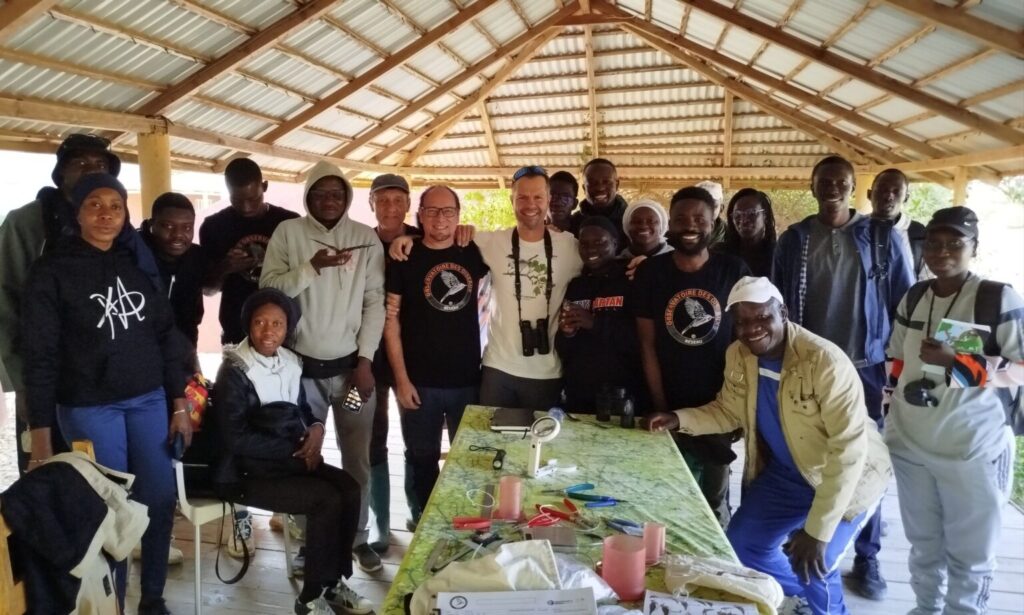
In this image, students from the Master’s in Ornithology at Gaston Berger, Saint Louis University in Senegal attend the scientific ringing workshop taught by Guillem Chacon in January 2025 in Langue de Barbarie National Park.
Ivory Coast
Italy
- Instructor BTS (Birdringing in the Tropics Scheme) of bird ringing trainers.
- Coordinator of the Erasmus+ European Universities “Bird Ringing and Global Change” 2025-2027
- Director of the Bird Observatory Network.
- Honorary Member of Oasi Costiera Ornithological Station (Italian Adriatic).
- Director of the Manu Bird Observatory (Peru), the Yucatán Bird Observatory (Mexico) and the Senegal Delta Bird Observatory (Senegal and Mauritania Biosphere Reserve).
- Ringing instructor for the Myrtlau Bird Observatory Brazil and Société Ivoirienne d’Ornithologie (Félix-Houphouët-Boigny University) in Abidjan. Côte d’Ivoire.
- National ringing instructor in Mauritania, Senegal, Niger, Cameroon, Uganda and Madagascar.
- Associate researcher at: Avian Conservation Uganda, Laboratoire de Faune et Aires Protégées, Sylviculture et Technologie du Bois (Université de Dschang) Cameroon, Plant Vert – Université d’Abomey-Calavi, Benin, Nature Mauritanie.
- Coordinator in the Senegal Delta (Senegal-Mauritania) for the cr-ringing and satellite tagging of the Great White Pelican (Pelecanus onocrotalus).
- Coordinator in the Amazon for the cr-ringing and satellite tagging of the Horned Screamer (Anhima cornuta).
- Coordinator in the Amazon for the cr-ringing and satellite tagging of the King Vulture (Sarcoramphus papa).
